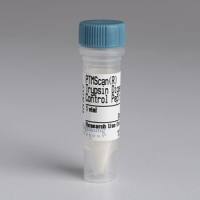The Chemical Synthesis of -Conotoxins and Structurally Modified Analogs with Enhanced Biological Stability
互联网
494
α-Conotoxins are peptide neurotoxins isolated from the venom ducts of carnivorous marine cone snails that exhibit exquisite
pharmacological potency and selectivity for various nicotinic acetylcholine receptor subtypes. As such, they are important
research tools and drug leads for treating various diseases of the central nervous system, including pain and tobacco addiction.
Despite their therapeutic potential, the chemical synthesis of α-conotoxins for use in structure–activity relationship studies
is complicated by the possibility of three disulfide bond isomers, where inefficient folding methods can lead to a poor recovery
of the pharmacologically active isomer. In order to achieve higher yields of the native isomer, especially in high-throughput
syntheses it is necessary to select appropriate oxidative folding conditions. Moreover, the poor biochemical stability exhibited
by α-conotoxins limits their general therapeutic applicability in vivo. Numerous strategies to enhance their stability including
the substitution of disulfide bond with diselenide bond and N-to-C cyclization via an oligopeptide spacer have successfully
overcome these limitations. This chapter describes methods for performing both selective and nonselective disulfide bond oxidation
strategies for controlling the yields and formation of α-conotoxin disulfide bond isomers, as well as methods for the production
of highly stable diselenide-containing and N-to-C cyclized conotoxin analogs.









